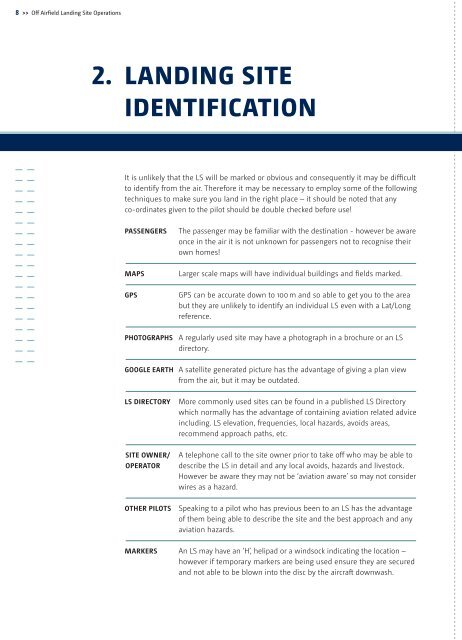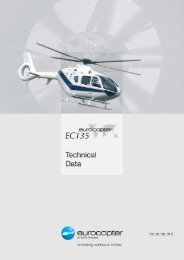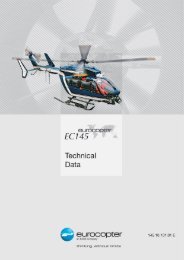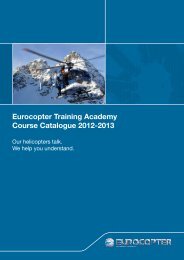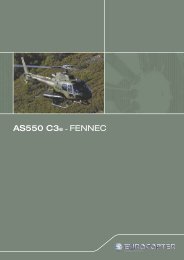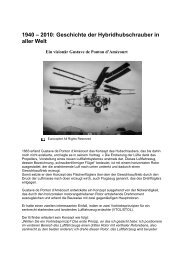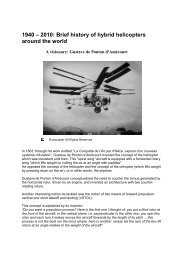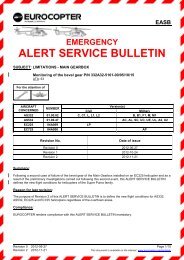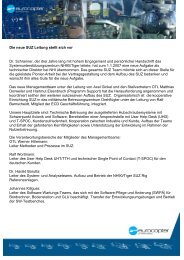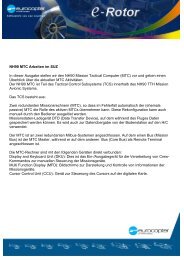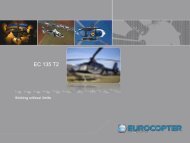EHEST Off-airfield Landing Site Operations - Eurocopter
EHEST Off-airfield Landing Site Operations - Eurocopter
EHEST Off-airfield Landing Site Operations - Eurocopter
Create successful ePaper yourself
Turn your PDF publications into a flip-book with our unique Google optimized e-Paper software.
8 >> <strong>Off</strong> Airfield <strong>Landing</strong> <strong>Site</strong> <strong>Operations</strong><br />
2. LANDING SITE<br />
IDENTIFIcATION<br />
It is unlikely that the LS will be marked or obvious and consequently it may be difficult<br />
to identify from the air. Therefore it may be necessary to employ some of the following<br />
techniques to make sure you land in the right place – it should be noted that any<br />
co-ordinates given to the pilot should be double checked before use!<br />
paSSEngErS The passenger may be familiar with the destination - however be aware<br />
once in the air it is not unknown for passengers not to recognise their<br />
own homes!<br />
mapS Larger scale maps will have individual buildings and fields marked.<br />
gpS GPS can be accurate down to 100 m and so able to get you to the area<br />
but they are unlikely to identify an individual LS even with a Lat/Long<br />
reference.<br />
pHotograpHS A regularly used site may have a photograph in a brochure or an LS<br />
directory.<br />
googlE EartH A satellite generated picture has the advantage of giving a plan view<br />
from the air, but it may be outdated.<br />
lS dirEctory More commonly used sites can be found in a published LS Directory<br />
which normally has the advantage of containing aviation related advice<br />
including. LS elevation, frequencies, local hazards, avoids areas,<br />
recommend approach paths, etc.<br />
SitE oWnEr/<br />
opErator<br />
A telephone call to the site owner prior to take off who may be able to<br />
describe the LS in detail and any local avoids, hazards and livestock.<br />
However be aware they may not be ‘aviation aware’ so may not consider<br />
wires as a hazard.<br />
otHEr pilotS Speaking to a pilot who has previous been to an LS has the advantage<br />
of them being able to describe the site and the best approach and any<br />
aviation hazards.<br />
markErS An LS may have an ‘H’, helipad or a windsock indicating the location –<br />
however if temporary markers are being used ensure they are secured<br />
and not able to be blown into the disc by the aircraft downwash.


